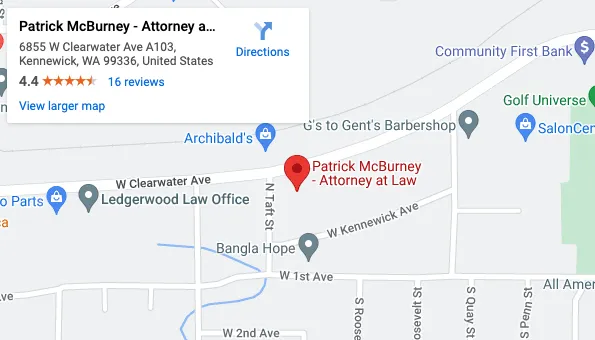Trusted Bankruptcy Attorney in Adams County, WA
At the law office of Patrick McBurney, we’ve seen many people struggle to deal with piling credit card debt, medical bills, and student loans. One of the ways to handle your problems is to file for bankruptcy.
However, there are many types of bankruptcy out there. The US Bankruptcy Code outlines how these processes work and how they can provide bankruptcy protection for Americans. In this article, we’ll compare the two most common bankruptcy chapters to file: Chapter 7 and Chapter 13.
Before you file for bankruptcy, it’s still best to consult a professional. Our experienced bankruptcy attorney at McBurney Law Office is here to help you! Call us today to schedule a consultation!
A Brief Overview of Chapter 7 and Chapter 13
Chapter 7
This is a liquidation bankruptcy where the appointed trustee sells your nonexempt property to pay off your creditors. It’s the preferred option for those who want to quickly get rid of their debt and immediately experience a fresh start. Additionally, you don’t need to pay back your creditors. However, Chapter 7 filers have a greater chance of losing their property.
Chapter 13
This is a reorganization bankruptcy where you organize your debts into a 3-5 year repayment plan. This is generally for debtors who want to catch up on their missed payments to keep their property. The main drawbacks are the length of the entire process and that you may have to repay some of your debts.
Main Differences Between Chapter 7 and Chapter 13
Bankruptcy Discharge
Once your debt is discharged, you are cleared of the responsibility to pay it off. Generally, it’s the unsecured debt that qualifies for a bankruptcy discharge. Nondischargeable debt includes certain secured debts, some student loans, spousal support, and child support, among many others.
In Chapter 7, you can expect to receive a discharge after 3-4 months. Chapter 13 filers can get a discharge after they finish paying their plan.
Eligibility
Another significant difference between these two options is the qualification requirements. Chapter 7 is generally available for those with little to no assets. Those who reach a certain level of income do not have Chapter 7 available.
To qualify for Chapter 7, you need to pass the means test. This means your income has to be lower than the median household income in the state.
For Chapter 13, you cannot have more than $2,750,000 combined in secured and unsecured debts. You also need to have enough disposable income each month to make payments. Otherwise, you have no choice but to file for Chapter 7.
These eligibility requirements can be pretty complicated. If you want to know whether you qualify for either Chapter, you can ask our knowledgeable Washington bankruptcy lawyer!
Property Considerations
You may be thinking about whether you’d keep your property after bankruptcy. The two Chapters have different outcomes when it comes to property.
For Chapter 7, the trustee can sell any of your nonexempt property. A Chapter 13 bankruptcy can allow you to keep your property so long as you pay your unsecured creditors an amount equal to the value of non-exempt assets.
Ask our Reliable Adams County Bankruptcy Attorney
While we mentioned the more pertinent differences, there may be specifics in your situation that make one choice better than the other. We are talking about your financial future here. Patrick McBurney can help you weigh your options if you want a stable life after bankruptcy. Call our Washington bankruptcy law firm today to schedule a consultation!


